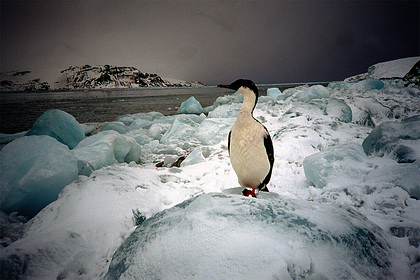
The details of the secret Nazi expedition to Antarctica in 1938 have been published – they are published in their book “Antarctica. Unknown and incredible stories of the white continent ”described by Thomas Balmaceda and Augustina Larrea. Excerpts from the work were published by the online newspaper elDiario.es.
Balmaceda and Larrea write that on December 17 the Schwabenland, equipped with the latest technology, with a crew of 82 people left Hamburg. Together with them, the seaplanes “Boreas” and “Passat” were sent to Antarctica, which could be used at temperatures below 50 degrees Celsius, and provisions for the trip. “Saying goodbye to the German lands, Reich Minister Rudolf Hess, Hitler's deputy [in the party], greeted Schwabenland, recalling the importance of the mission for the plan of the Third Reich,” the book says.
The Nazis are said to have targeted Antarctica for several reasons. First, the continent was “geostrategically attractive” – after World War I, Germany needed new bases in the southern hemisphere. Second, the region was of commercial value to the Nazis – since the 1920s, whale oil was important to Germany, added to food and cleaning products. The loss of the colonies where vegetable and animal fats were obtained forced the authorities to look for new sources of oil.
The members of the expedition surveyed almost 600 thousand square kilometers of Antarctica. Scientists who took part in the mission studied the climate with the help of radiosondes, measured the temperature of the ocean, studied the underwater topography and corrected the data of the nautical charts.
In addition, the main goal of the visit to the continent was achieved: the ideal place for the construction of the base was found. The pilot of one of the seaplanes, Richard Schirmacher, said that on February 3, he discovered a small rock formation, next to which there was a reservoir without any visible tributaries, and the surface temperature was only minus 5 degrees Celsius.
On February 5, the crew raised the Nazi flag at the site of the future base, caught four emperor penguins and headed back to Germany. A month later, the members of the expedition arrived in Cape Town, where they were awaited by a congratulatory telegram from the chairman of the Reichstag, Reich Minister of Aviation Hermann Goering. In mid-April, the Schwabenland moored in Hamburg, where it was received by the country's top leadership. The researchers were congratulated by Adolf Hitler himself.

